
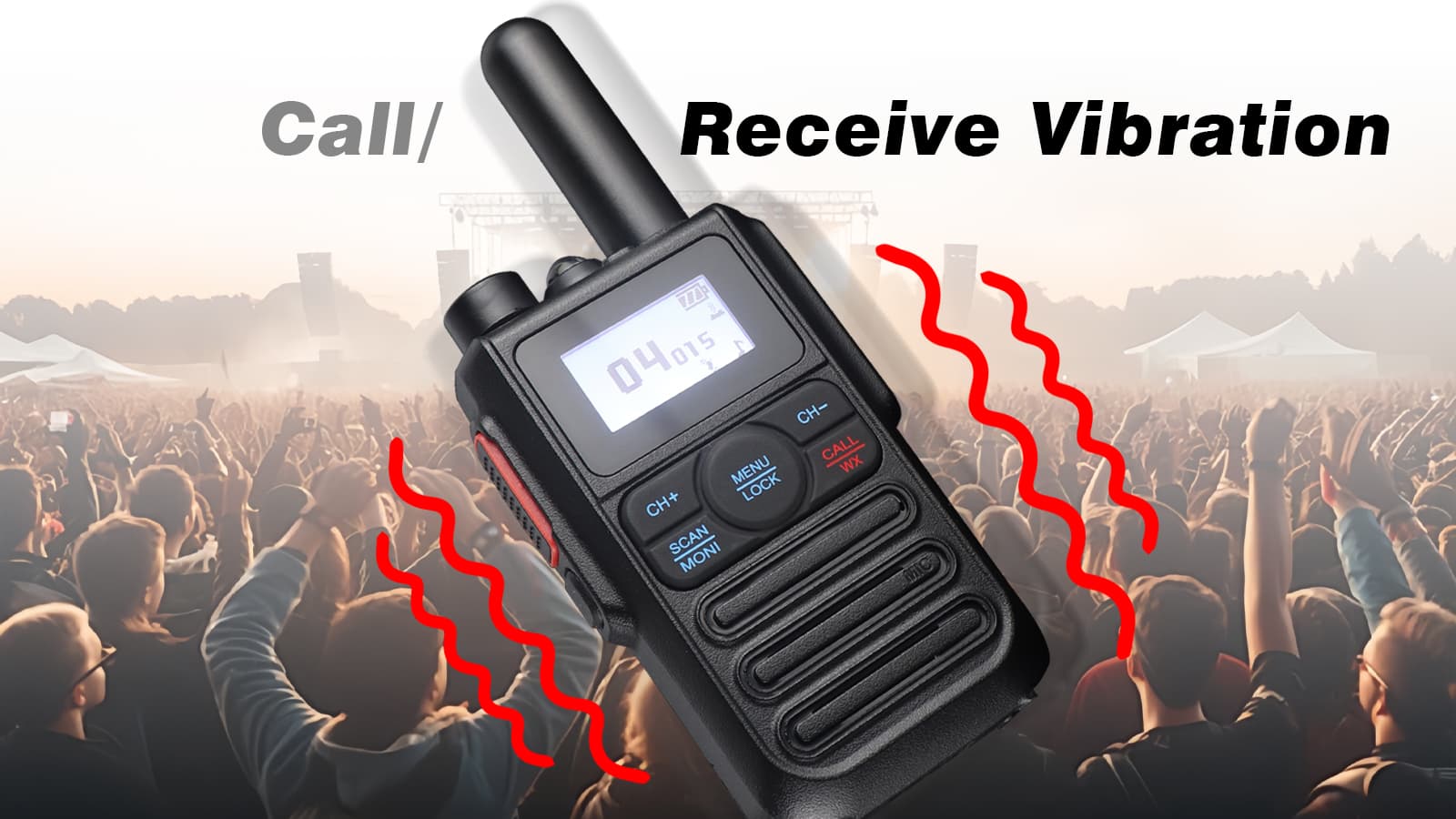
What is "Call Vibration" on a Walkie-Talkie? Call Vibration (often called Vibrate Alert or Vibra-Call) is a feature on many modern walkie-talkies that causes the device to vibrate silently when it receives an incoming call (transmission) from another unit in your group. It works exactly like the vibrate mode on your mobile phone. How Does It Work? Incoming Signal: Someone in your group presses the Push-to-Talk (PTT) button on their walkie-talkie. Activation: Your walkie-talkie, set to the same channel and privacy code (CTCSS/DCS), receives the signal. Vibration Alert: Instead of (or in addition to) an audible ringtone, a small motor inside your walkie-talkie activates, making the device vibrate. Your Action: You feel the vibration, know someone is calling, and you can then press your PTT button to respond. Why is This Feature So Important? The vibrate function is crucial in situations where sound is a problem: Noisy Environments: On a construction site, in a factory, at a loud concert, or in a busy warehouse, you might not hear the call alert tone. A vibration is much easier to feel. Quiet/Stealth Environments: In a library, during a meeting, in a hospital, on a security patrol, or while hunting, an audible alert would be disruptive or counterproductive. Vibration allows for silent communication. Discretion: It allows you to receive a call without drawing attention to yourself or interrupting others nearby. Confirmation: It provides a physical confirmation that your group's channel is active and someone is trying to reach you, even if you momentarily miss the audio.
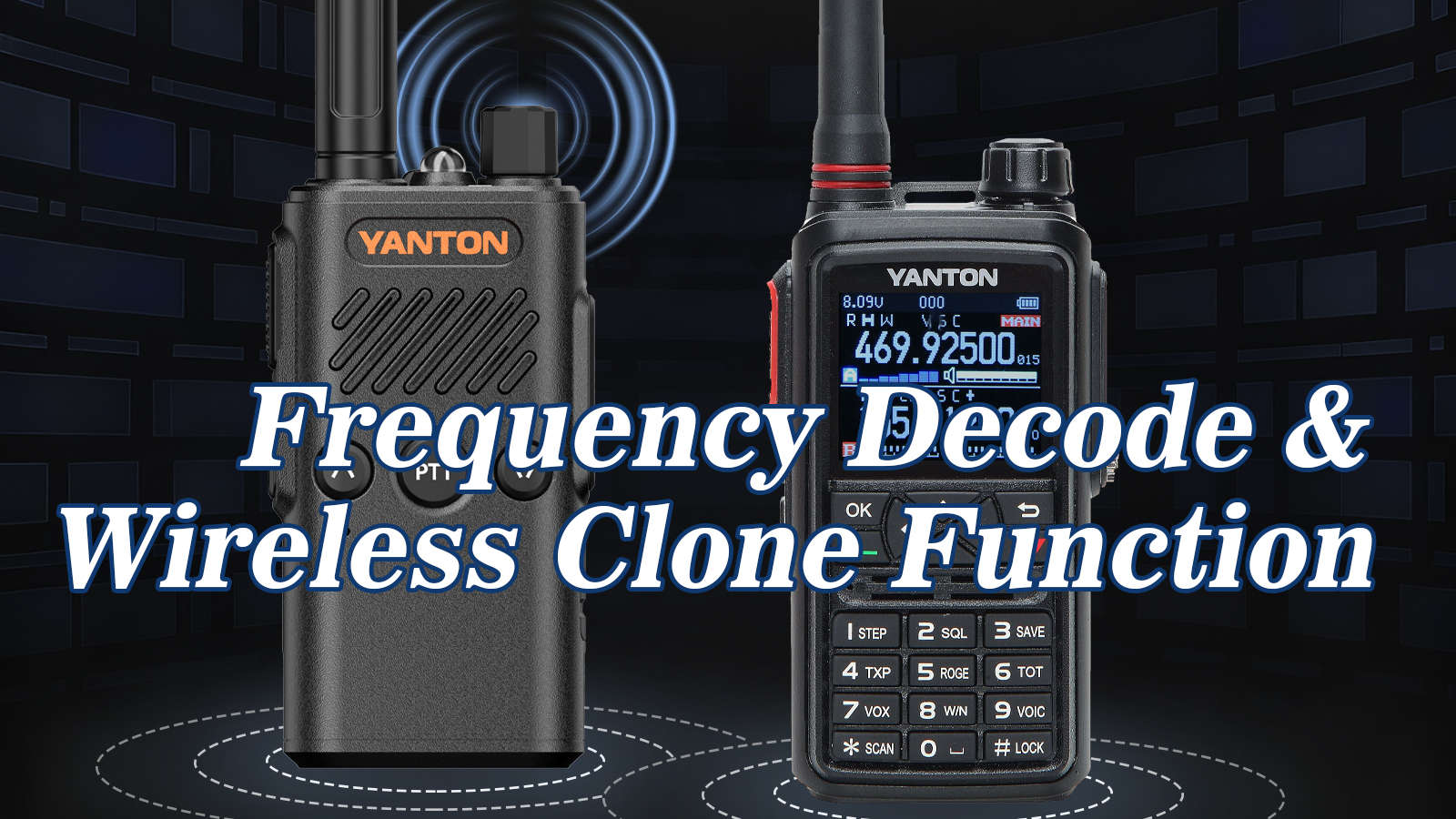
These are two distinct but related functions found in some advanced walkie-talkies (like YANTON T-U8 radio and T-360UV) that allow you to gather intelligence and replicate settings from other radios. Frequency Decode: Is the "Listen and Identify" function. Wireless Clone: Is the "Copy and Paste" function. 1. Frequency Decode What it is: This is a feature that allows the walkie-talkie to listen to a radio signal and determine the exact frequency on which that signal is being transmitted. How it Works: 1. Set Radio A (receiver) to Channel 1 and turn it off. 2. Press and hold Side Button 1 on Radio A (receiver) while it is powered on. The radio will automatically announce "Entering Frequency Measurement Mode" and end with a beep. 3. Position Radio B (transmitter) approximately 1 meter from the Radio A. Press and hold the PTT button on Radio A (receiver) to transmit. The Radio A (receiver) will announce "Frequency Measurement Successful" and automatically save the channel. Radio A (receiver) and B (transmitter) can now communicate normally on the current channel. 4. Switching to another channel is similar to the above steps. Switch Radio A (receiver) to another channel, and Radio B (transmitter) will also switch channels. Press and hold the PTT button on Radio B (transmitter) to transmit. The Radio A (receiver) will announce "Frequency Measurement Successful" and automatically save the channel. Radio A (receiver) and B (transmitter) can now communicate normally on the current channel. 2. Wireless Clone What it is: This is a function that allows you to copy all the programming settings from one walkie-talkie to another of the same model, without using a computer or a cable. It transmits the configuration data wirelessly via radio signal. How it Works: 1. Set Radio A (receiver) to Channel 2 and power off. 2. On Radio A (receiver), press and hold side button 1 and power on. After hearing the "Team Receive" tone, the transceiver enters the wireless cloning function; the current indicator light turns blue. 3. Set Radio B (transmitter) to Channel 2 and power off. 4. On Radio B (transmitter), simultaneously press and hold side button 1 and the PTT transmit button and power on. The voice prompt "Team Receive" will sound, and the current indicator light turns red. 5. After a few seconds, both Radio A (receiver) and Radio B (transmitter) will automatically announce the current channel "2," indicating that the two radios have successfully teamed up. The two radios can now communicate. Summary Table Feature Primary Function How It Works Common Use Case Frequency Decode Identify & Discover Listens to a transmission and displays its frequency. Finding unknown channels for listening. Wireless Clone Copy & Duplicate Transmits configuration data from one radio to others. Bulk programming a fleet of radios quickly.
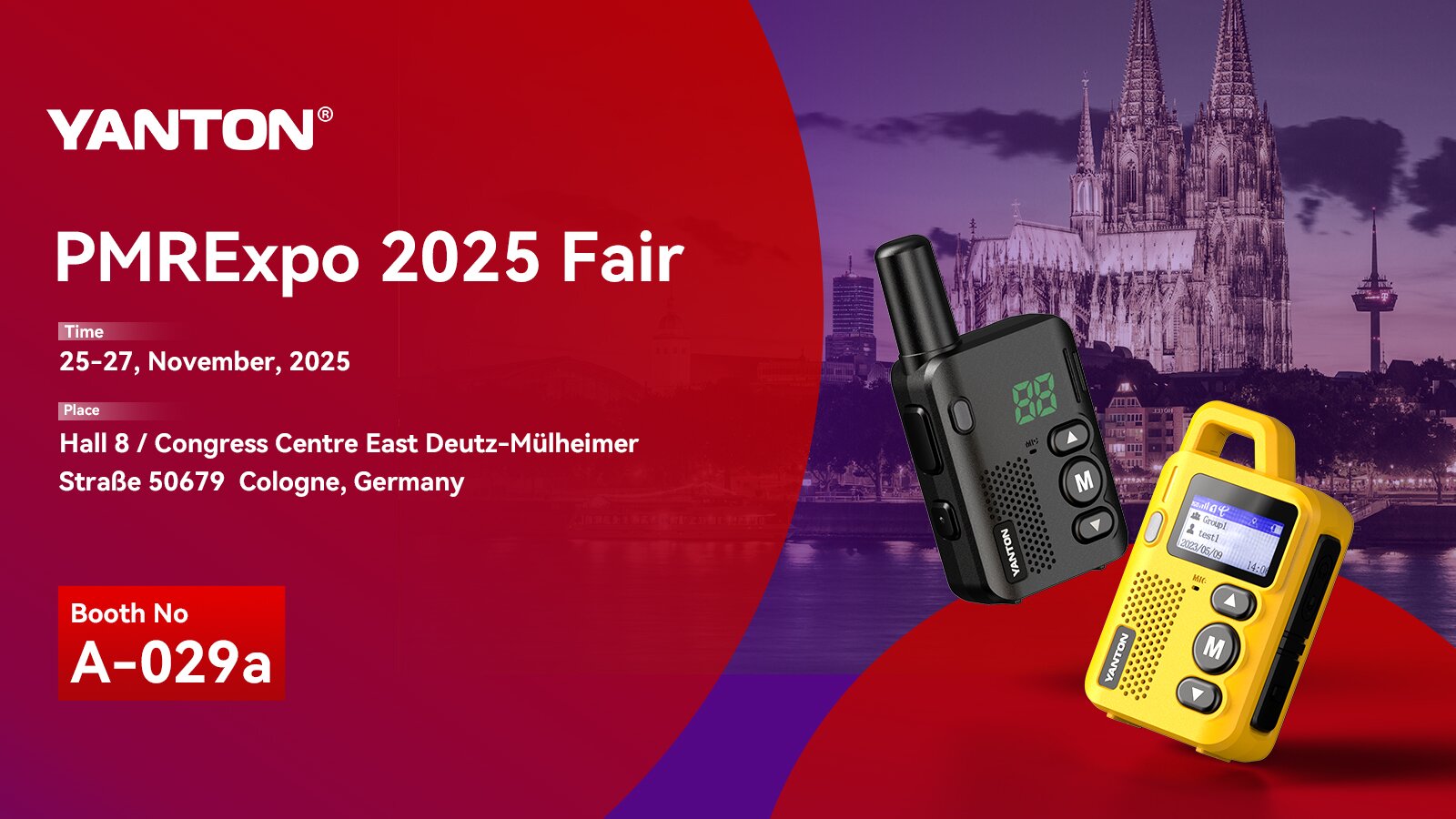
Date: 25-27, November, 2025, Venue: Hall 8 / Congress Centre East Deutz-Mülheimer Straße 50679 Cologne, Germany Booth Number: A-029a YANTON, is thrilled to announce our participation in the PMRExpo 2025 Fair. We cordially invite you to visit our booth (A-029a) to experience our latest advancements in professional communication technologies and explore opportunities for collaboration. Featured Products for Global Markets: High-performance, cost-effective DMR Radios, Business Radios, and Commercial PoC Radios tailored for enterprise and industrial applications. License-free walkie-talkies and HAM Radios designed for hobbyists and personal use, combining user-friendly operation with cutting-edge features. As a leader in communication innovation, YANTON is committed to empowering global connectivity. Whether you seek rugged devices for critical operations or consumer-friendly gadgets, our solutions deliver reliability, affordability, and excellence.
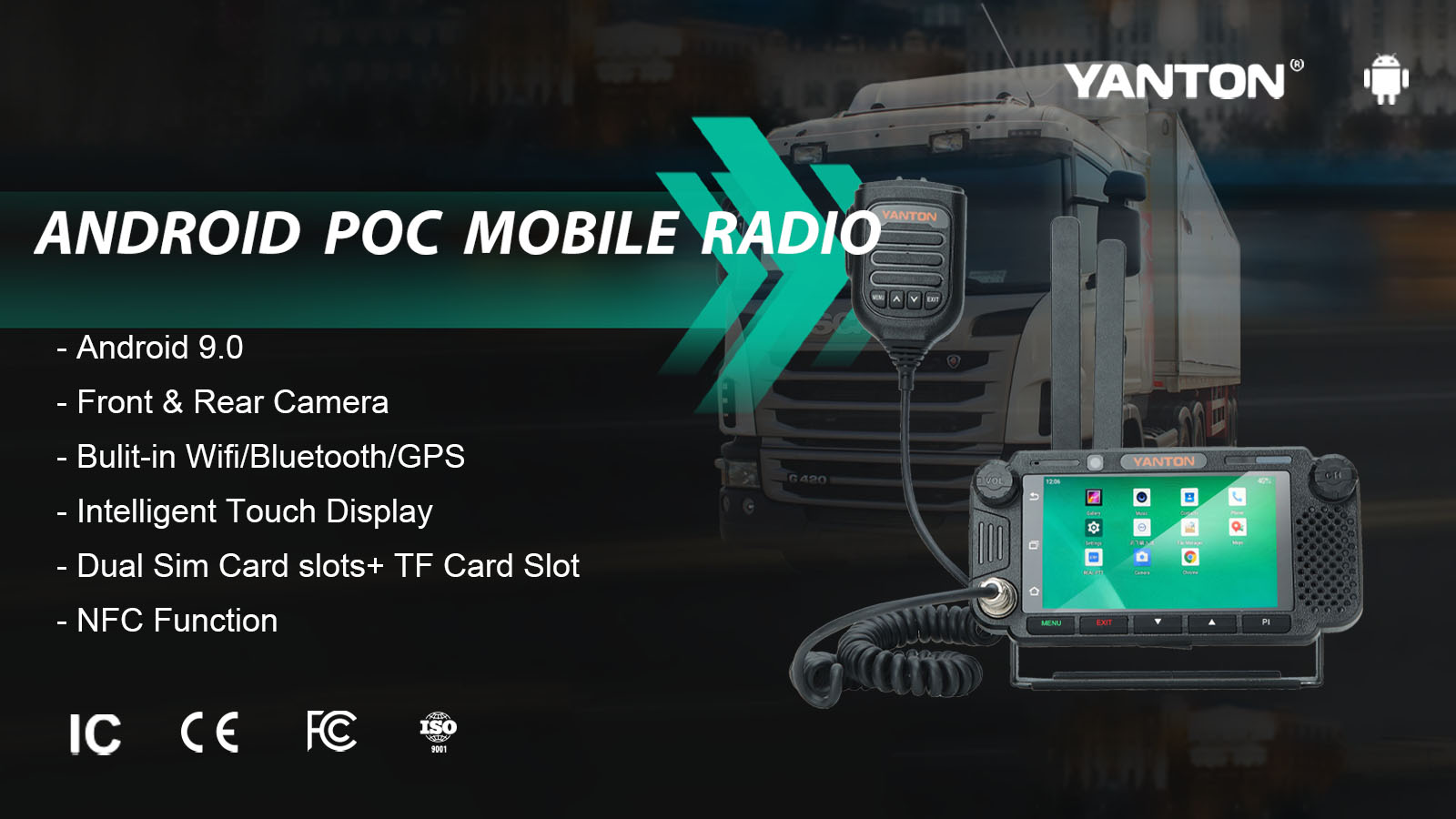
The TM-7600 is a Push-To-Talk over Cellular (PoC) mobile radio designed for in-vehicle communication. With YANTON innovative design, it provides reliable, loud & clear voice service for various field communication scenarios. Smooth Communication Compared with regular smartphone, the external LTE antennas on the 7600 improve its RX sensitivity. The manual switch enables the 7600 radio to always select the network with stronger signal strengths. Loud and Clear Voice The built-in 5watt speaker comes with distortion suppression, howling suppression and noise cancellation technology, which enables the 7600 to transmit loud and clear audio even with the window rolled down in construction sites or bustling street. Flexibility and Adaptability Paring with rich accessories, the 7600 gives more freedom and flexibility for voice communications. With the Android system and standard APIs, the 7600 is open for third-party apps to create an in-vehicle ecosystem for data application in the field. Robust Design, Easy to Use Compact and lightweight, the 7600 perfectly fits into the limited space in the vehicle of almost all types. Aviation connector between remote microphone and main unit, robust design to provide reliable and stable connection under any operation scenarios.
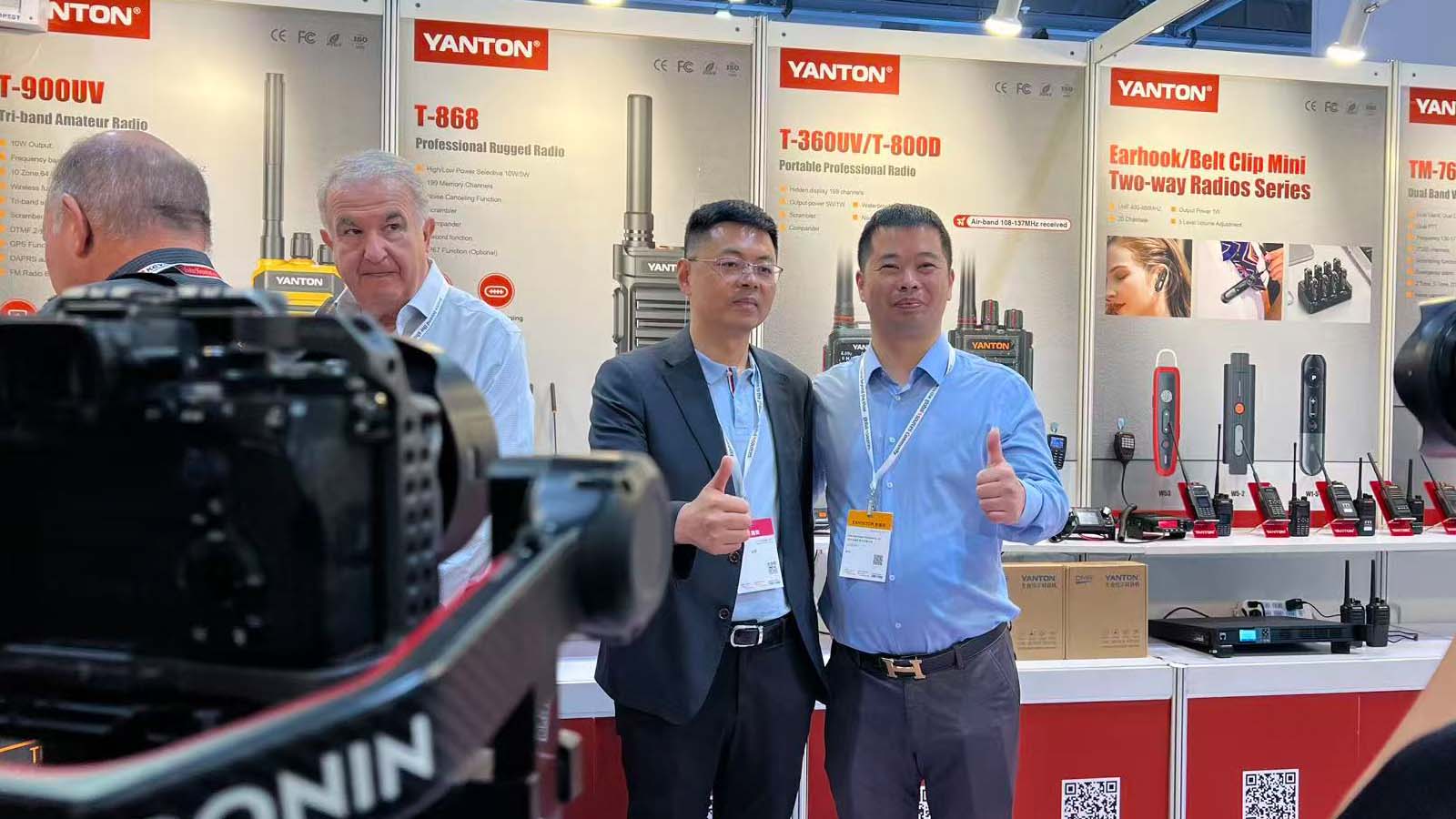
From October 11th to 14th, the 2025 HK China Global Source Electronics Fair was successfully held at the AsiaWorld-Expo. YANTON showcased its full range of wireless communications products at the show, showcasing the strength of Chinese intelligent manufacturing on the international stage, leveraging its 16 years of expertise in the industry. During the show, the mayor of Nan'an City took time out of his busy schedule to visit our booth and provide guidance, which was extremely encouraging. At the show, the mayor and his delegation, accompanied by our General Manager Chen Qingtian and his core team, toured our meticulously designed exhibition area. During the visit, the mayor expressed high praise for our company's achievements in technological innovation, product development, and market expansion. To fully demonstrate its brand strength, YANTON meticulously crafted a highly technological booth, showcasing its core products, including handheld walkie-talkies, car radios, repeaters, and public network walkie-talkies. Launched at the conference: Analog Radio: 10W Hidden Display with 10-hour recorder function, YANTON T-868 PoC Radio: PoC+DMR/Analog dual mode, 10W output in DMR/Analog mode, with repeater/recorder function, 300-hour record function, YANTON DM-868PLUS DMR Radio: DMR/analog dual mode, 10W output, 300-hour record, with GPS, mandrel function, YANTON DM-868 This exhibition is a significant step in YANTON global expansion. Going forward, the company will continue to leverage technological innovation and international exhibitions to bring more high-quality wireless communication equipment to the world.
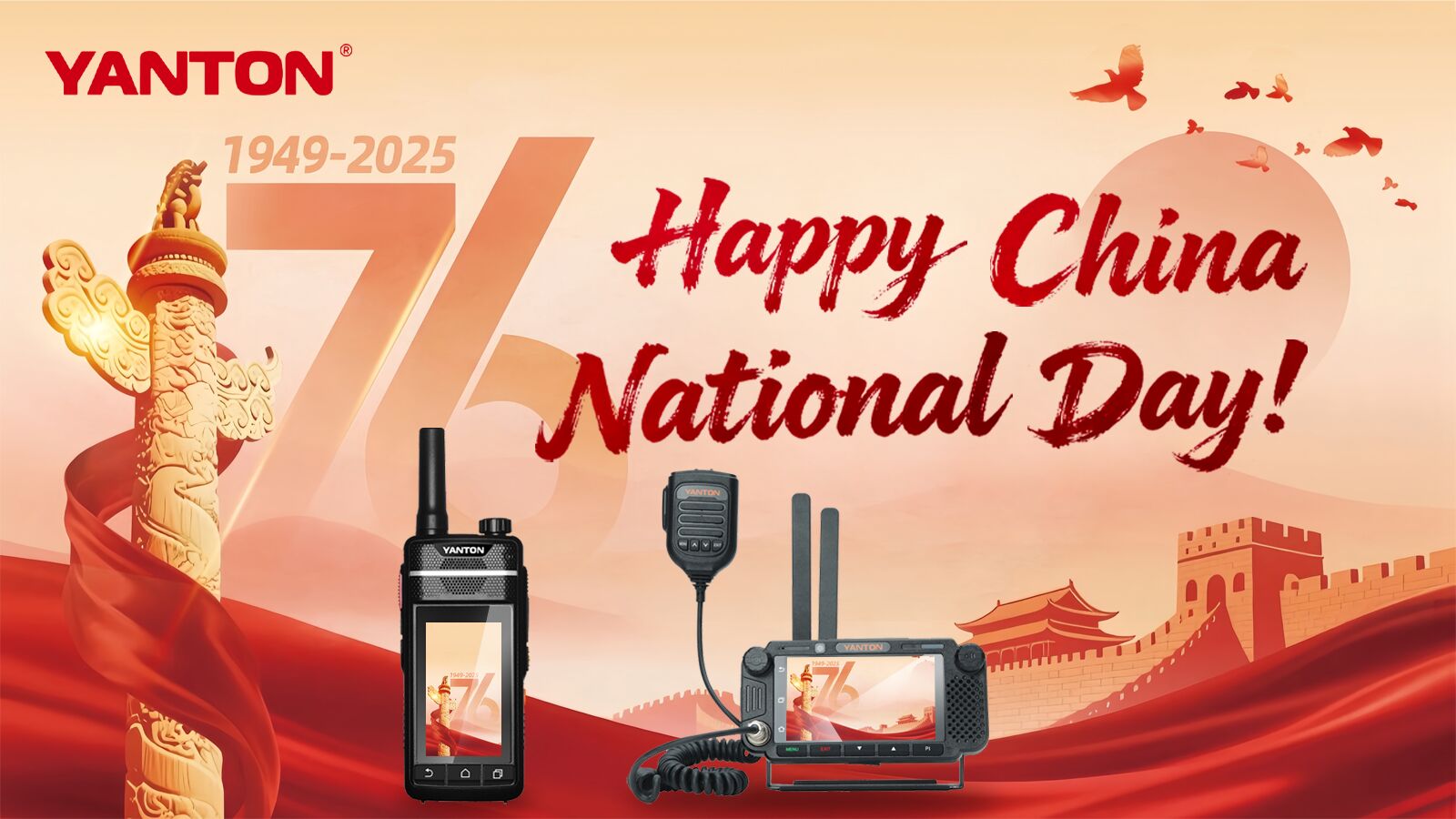
In celebration of the 76th Anniversary of the Founding of the People's Republic of China, we will observe a holiday from 1st to 6th October 6th. For any urgent matters, please contact YANTON sales team; we will do our best to assist you.
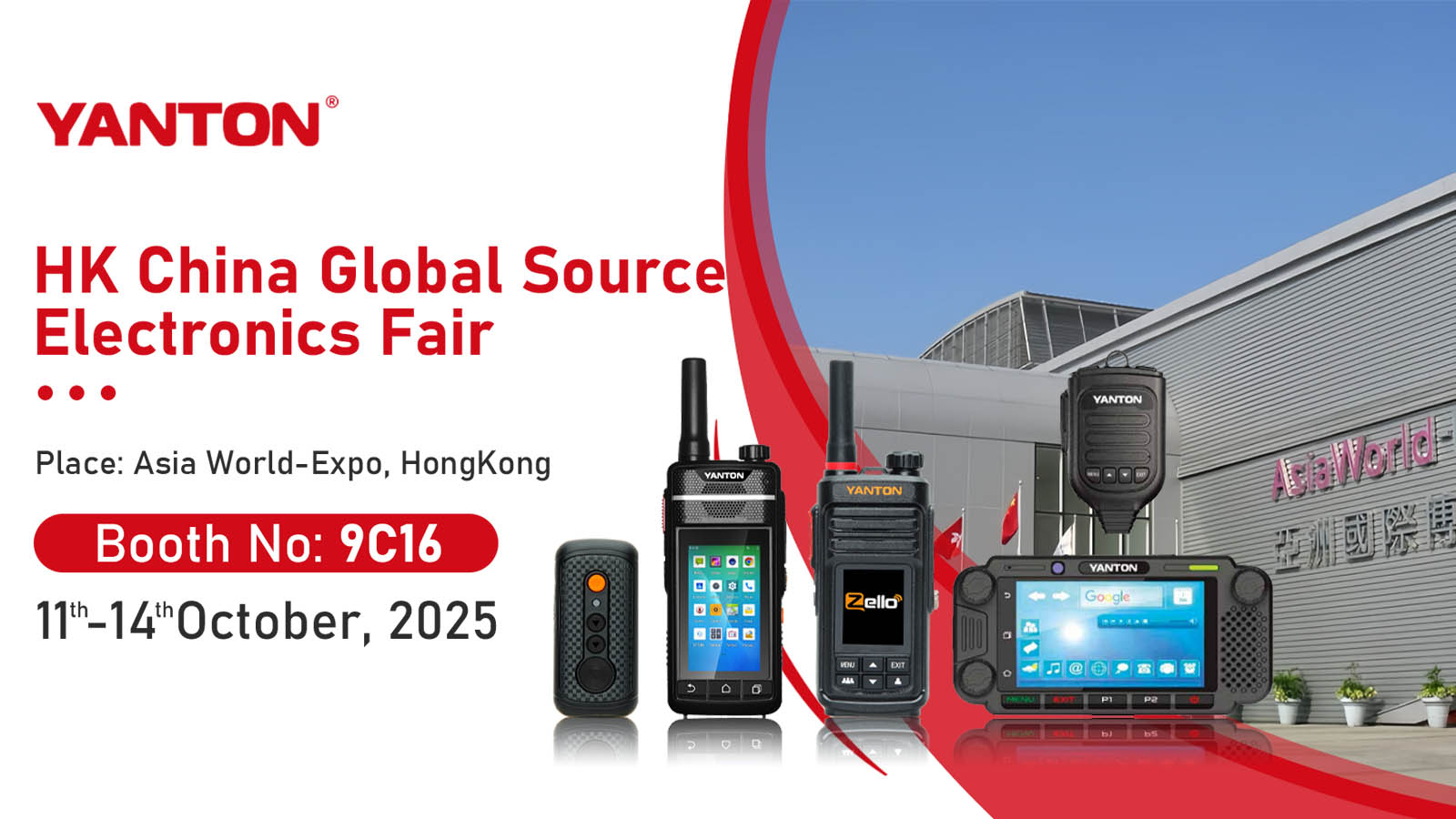
Date: October 11-14, 2025 Venue: Asia World-Expo, HongKong Booth Number: 9C16 We invite all our global partners, potential distributors, and industry enthusiasts to visit us at Booth 9C16 to discover our latest innovations and comprehensive OEM solutions. This year, we are excited to unveil a range of cutting-edge products designed to meet diverse market needs: T-X9D High-Value PoC Radio(Explosion-proof Series): Experience our cost-effective Push-to-Talk over Cellular solution, bringing intelligent, wide-area communication within reach. U8 License-Free Walkie-Talkie: Discover our latest model designed for ease of use and accessibility, perfect for a broad spectrum of applications. The HK China Global Source Electronics Fair is a premier global trade event, and we are eager to connect with agents and partners from around the world. At our booth, we will be showcasing our one-stop, all-encompassing walkie-talkie OEM solutions. Whether you are looking for custom product development, manufacturing expertise, or end-to-end support, our team is ready to discuss how we can help bring your vision to life. Join us at Booth 9C16 to explore the future of communication, discuss partnership opportunities, and learn how YANTON can be your trusted OEM partner. We look forward to welcoming you!
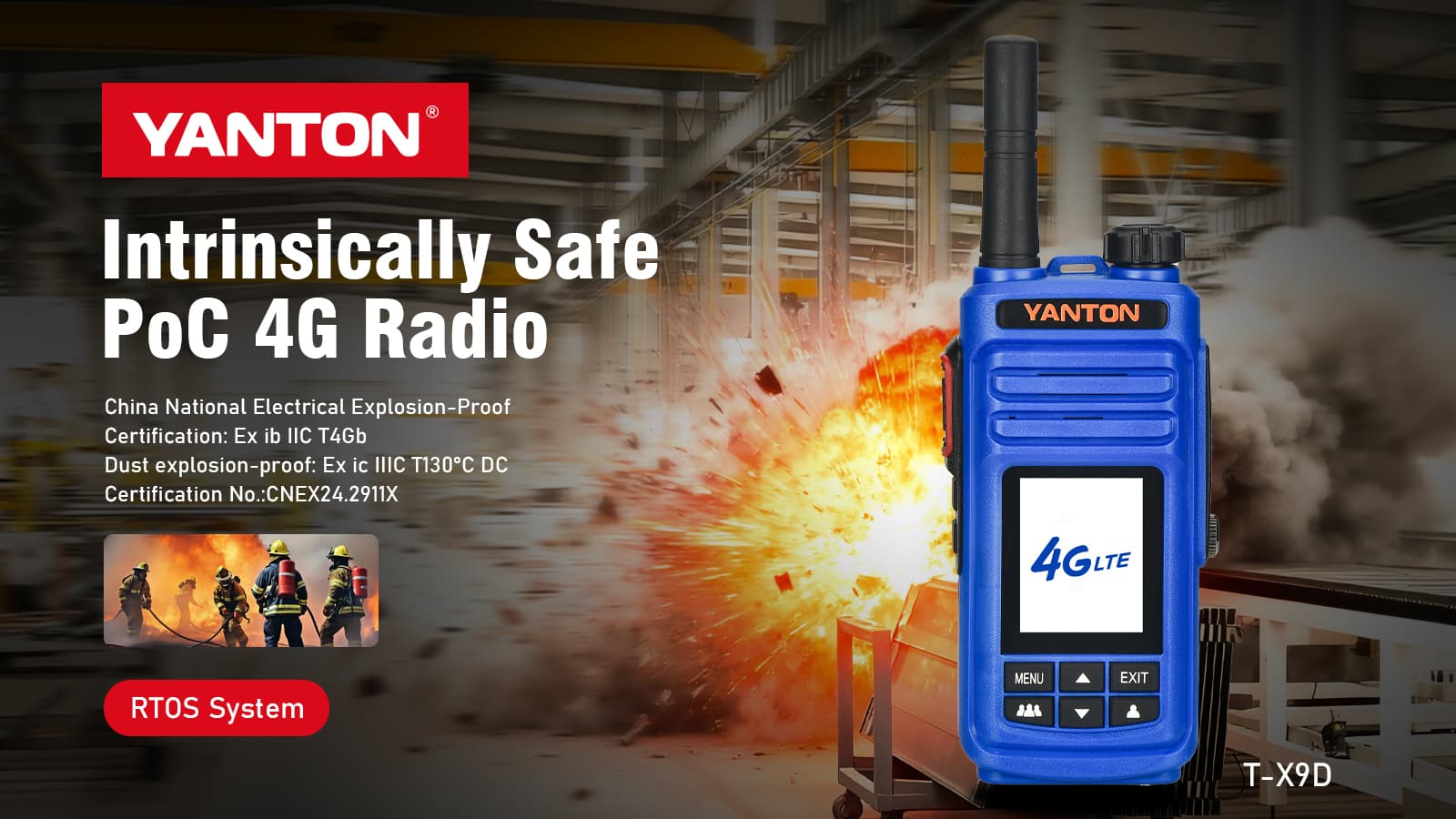
Explosion-Proof (Hazardous Location Rating) An explosion-proof rating means the device's enclosure is designed to: Contain an Internal Explosion: If a spark from the device's internal components (e.g., the battery, circuitry) ignites flammable gases or dusts that have seeped inside, the enclosure is strong enough to contain the explosion without rupturing. Prevent Ignition of External Atmosphere: The joints and flanges of the enclosure cool any hot gases escaping from inside so that they are not hot enough to ignite the surrounding flammable atmosphere. Operate Safely at Surface Temperatures: The exterior of the device will not get hot enough to become an ignition source itself. This is crucial in industries where flammable gases, vapors, liquids, or dusts are present. Common Standards and Certifications: ATEX (Europe): Directive 2014/34/EU. A device might be rated for Zone 1 (high risk) or Zone 2 (lower risk). IECEx (International): A global certification system. UL (North America): Class I, Division 1 (hazardous gases present normally) or Division 2 (hazardous gases present abnormally). GB(China's standard system): GB 3836 series of standards. Explosion-Proof PoC Radio: An Explosion-Proof PoC Radio is a rugged, wireless communication device that is: 1. Certified for use in hazardous environments (like oil refineries, chemical plants, grain silos, mining operations, paint booths, and gas utilities) where flammable substances are present. 2. Uses public cellular networks to provide instant push-to-talk voice communication, GPS location tracking, and data messaging over a very wide area. It is essentially a professional-grade, intrinsically safe Smartphone /walkie-talkie hybrid built for the most dangerous workplaces. Key Benefits and Use Cases: Safety: The primary benefit. It allows for critical communication in volatile areas without being a source of ignition. Extended Range: Workers on a large refinery site, pipeline right-of-way, or remote mining operation can stay connected far beyond the range of a traditional radio system. Enhanced Coordination: Supervisors can instantly communicate with teams spread across different locations and track their precise GPS location for safety and efficiency. Cost-Effective: Eliminates the need to build and maintain a private land mobile radio (LMR) network like a trunked radio system. In conclusion, an explosion-proof PoC radio is a vital tool for ensuring both safe operation and effective communication in industries where the combination of explosive atmospheres and wide-area operations is a daily challenge. Explosion-Proof (Hazardous Location Rating) An explosion-proof rating means the device's enclosure is designed to: Contain an Internal Explosion: If a spark from the device's internal components (e.g., the battery, circuitry) ignites flammable gases or dusts that have seeped inside, the enclosure is strong enough to contain the explosion without rupturing. Prevent Igni...
© Copyright: 2025 QUANZHOU YANTON ELECTRONICS CO., LTD. All Rights Reserved.

IPv6 network supported